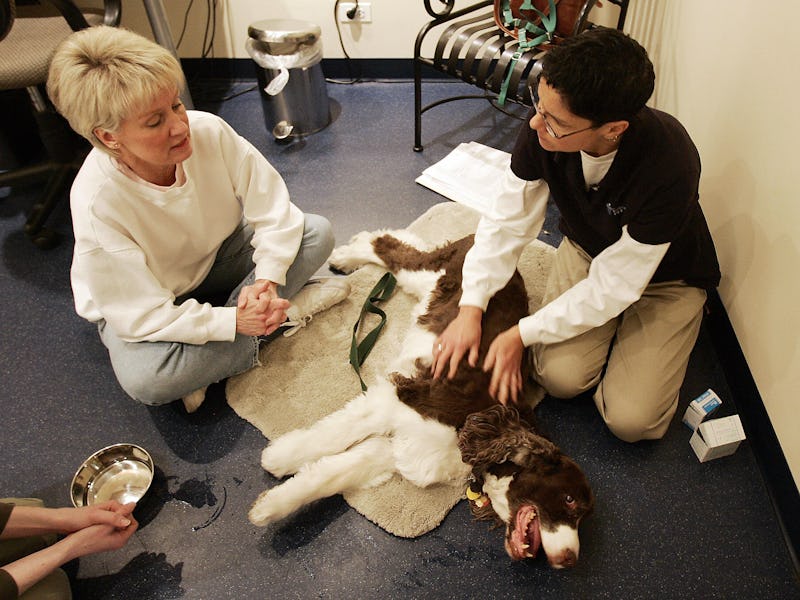Does My Pet Need a Chiropractor? A Veterinarian Reveals the Therapeutic Truth
Throw your dog a therapeutically adjusted bone.

Chiropractor videos garner tons of attention on social media. Viewers like to see these spinal adjustments and love to hear their snaps, crackles, and pops. It may be surprising to learn these services are also available for pet cats, dogs, rabbits, and other animals.
The thought of a pet chiropractor may seem jarring. A person yanking your dog’s head or body slamming your cat might not seem therapeutic, but it’s an option available in the face of injury or a chronic condition. Tending to the needs of a pet’s musculoskeletal system may be the help they need to regain mobility after sustaining an injury or learning to live with conditions like arthritis.
What do pet chiropractors do?
Like human chiropractic care, its animal counterpart — called veterinary spinal manipulation therapy — aims to improve mobility and relieve discomfort by adjusting the musculoskeletal system.
And no, cats and dogs don’t produce the same sounds that human skeletons do during manipulations. This cracking sound comes from air escaping from the joints. “Dogs and cats naturally don’t have as much air in their joints as we do,” Molly Flaherty, a clinical instructor in rehabilitation medicine at the University of Pennsylvania School of Veterinary Medicine, tells Inverse.
That’s not to say that you should begin compressing or stretching your pet’s little body. “I would advise people when they’re seeing things that look scary, or they hear a spinal cracking or popping or some significant twisting motions, that person may not actually be trained in animal chiropractic care,” she says. Pet owners risk creating more discomfort where their pet is already in pain or even creating a problem where there was none to start with.
Does it work?
Anecdotally, Flaherty has seen immediate changes in pet posture after a session. She’s also heard from her clients that she’s improved their pets’ well-being. “Sometimes the feedback I'll get is that they went to the dog park later, and people even noticed that their dog [was] more energetic,” she tells Inverse. Owners might also mention their dog will pick out a toy they hadn’t played with in a long time because they didn’t have the energy or capability.
Flaherty says there aren’t many clinical trials on veterinary chiropractic care, as such studies typically don’t receive funding. “We mostly are relying on the evidence in human studies,” she tells Inverse. Evidence of efficacy for chiropractic care in humans is generally mixed. While it appears able to relieve low-back pain in humans, the available research doesn’t present a clarion call for its utility or efficacy.
Still, with a dearth of evidence for animal chiropractic, there’s room for more research. One paper claims that the practice “has a lower incidence of injury or adverse reactions than many standard therapies and medications.”
Should I get my pet spinal manipulation therapy?
As with humans, pets don’t necessarily need to have an immediate underlying problem in order to get a musculoskeletal tune-up, though Flaherty advises getting the go-ahead from your vet first.
If you notice your pet’s change in posture, that could also be a sign to get treatment. For example, “if they're not able to sit with their legs tucked under their pelvis,” Flaherty says, that’s a telltale signal. “I recommend treatments when animals are recovering from an injury for a prolonged period of time because they have likely altered their posture,” Flaherty says. This may indicate some restrained mobility that can improve with a few spinal adjustments.
We all want what’s best for our pets. Though pet chiropractic care is a burgeoning field, it may be worth asking your vet about if your pet seems unhappy or uncomfortable.